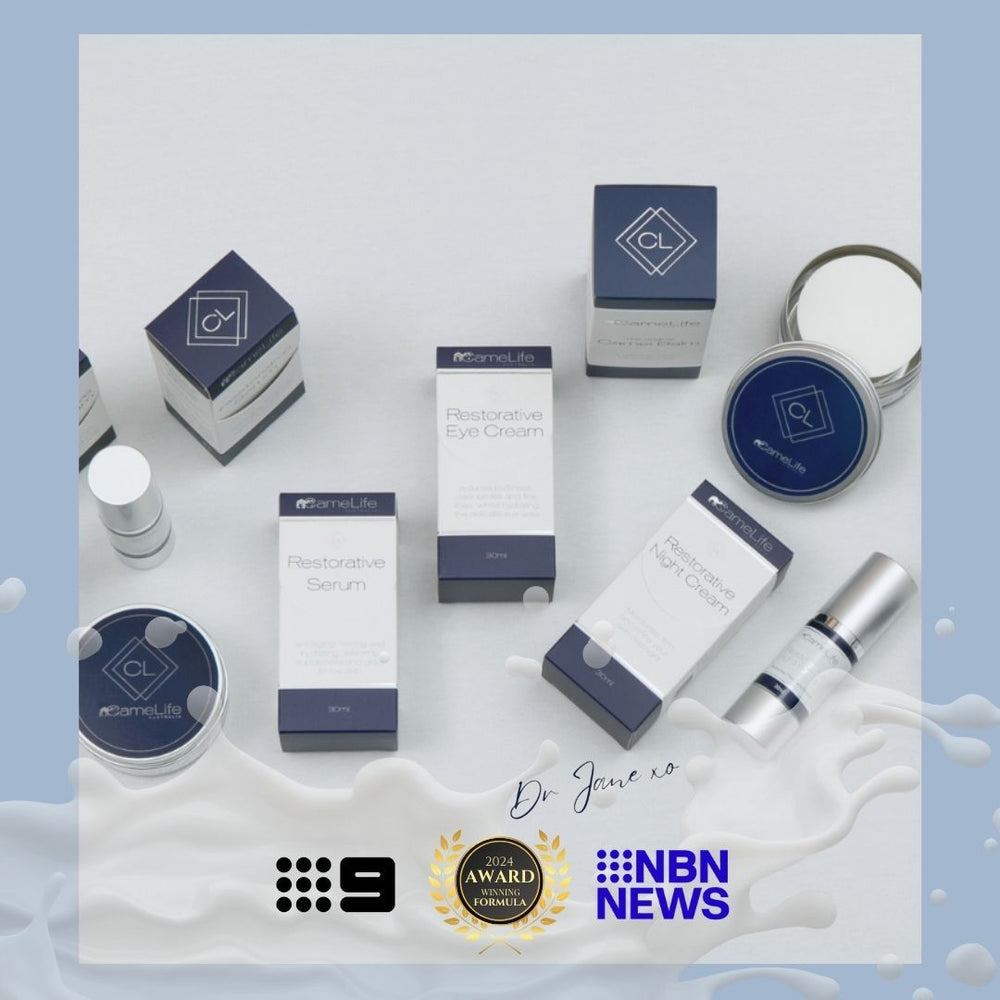Camel Milk Cleansers

Cleansers? Are you using the right routine?
Confused by all those cleansers in the shops? Why do you need more than one cleanser? Surely cleansing is just about removing your makeup, sunscreen and the grime built up from a busy day?
CameLife founder, Dr Jane Rose, believes that cleansing is the fundamental starting point of an effective skincare regime. “We talk to a lot of potential customers who are leaving out the most important step of their skincare routine; cleansing” she says. “Often they haven’t really thought through facial cleansing and reckon that water works fine, or they just don’t feel that a daily cleansing routine is necessary”
So do you spend your money on products that claim to transform your skin and hold back ageing? And if you do, do you prepare your skin by cleansing before applying them? Here at CameLife, we believe that most people who don’t cleanse haven’t been taught how important it is. In the Daily Mail, leading Sydney dermatologist Dr Natasha Cook agreed about the importance of cleansing and shared her top tips.
So maybe its time we at CameLife explained how our Facial Cleansing Bar fits in. Along the way, we’ll try to bust a few myths.
Exploring Myths about Cleansers
Myth 1: Wash and Go

All you need to do is wash and go? No, cleansing is a two-step process and it needs more than just soap and water. A bar of soap designed for your body is likely contain harsh detergents and additives that can strip your face of natural oils, causing breakouts. In a two-step cleanse, the first cleanse will remove make-up, sunscreen and surface impurities that act as a barrier. The second cleanse will penetrate deeper into your skin.
“Many cleansers can’t take off foundations and sunscreens completely, especially around the eyes and nose.” says CameLife founder Dr Jane Rose. “If you have applied sunscreen or makeup, you may need to use an oil-based cream, an emollient wipe or a cleansing oil to dissolve what are often stubborn compounds”
A cleanser that is effective at dissolving sunscreen is quite likely to contain alcohols and it will always leave a residue of dissolved makeup and screen that needs to be washed off. You need to follow up with a second cleanse to remove the residue and cleanse deeper. Look for cleansers with sulphate-free surfactants; CameLife’s Facial Cleansing Bar contains only camel milk, citronella, bergamot and avocado oils and a natural, glycerine rich surfactant made from coconuts.
Myth 2: Wash Twice a Day
The jury is still out on how often to cleanse (morning and evening or just once at night), but dermatologists generally agree that over-washing can lead to irritation and dry skin. Generally, you should cleanse both morning an evening. The morning cleanse balances overnight oil production and helps to turn over dead skin cells, whilst the evening cleanse removes make-up, dirt and surface impurities. The morning cleanse can be a single stage as you are not dissolving makeup and sunscreen.
The right cleanser can improve skin hydration and assist with the anti-ageing process that occurs overnight. The rule is to use common sense: always wash your face after a workout to prevent breakouts, and wash excessively oily skin morning and night. For very dry or sensitive skin, stick to cleansing once a day in the evening.
Myth 3: Close Your Pores
Rituals like massaging your face to increase circulation or splashing with cold water to “close” your pores are a myth. “Pores don’t open and close,” says Dr Jane. In fact, extreme hot or cold can exacerbate problems like rosacea and redness.

That said, mild steam can help soften hardened oil in pores, so it’s never a bad idea to cleanse in the shower. Just make sure you use a cleanser rather than the shower gel! CameLife’s solid Facial Cleansing Bar is the perfect, convenient cleanser to take into the shower. Just remember to put it back in the tin afterwards or it will suck in moisture.
Myth 4: Buy Cleanser According to Skin Type
Dermatologists often recommend buying a cleanser according to skin type. Dr Cook’s article recommended:
Dry skin: Use an oil cleanser, micellar water, cleansing milks or lotions.
Oily skin: Use an oil or foaming cleanser.
Combination skin, use a foaming cleanser, cleansing oil or micellar water.
Sensitive skin, use a foaming cleanser or micellar water.
At CameLife it is the ingredients in your cleanser that are important, not your skin type. Make sure the ingredients don’t include a fragrance, which can be irritating. Avoid potentially toxic preservatives like parabens and avoid harsh soaps which are drying . If you are buying a foaming cleanser, look very carefully at the surfactant; its probably a Sodium Sulphate.
“If a cleanser fits the ingredients bill, the formula itself, whether it is a cream, lotion, foaming, solid bar, is more a matter of personal preference,” say Jane Rose. “Of course, people with dry skin may prefer formulas with added moisturisers and, if you have oily skin, you might want a wash that leaves skin feeling super clean.”
There’s no reason why a quality, all natural cleansing product cannot be effective on all types of skin. “I designed our cleanser to deliver the benefits of camel milk to all types of skin, adding only premium essential oils like Bergamot for its anti-septic properties” says Dr Jane.
Myth 5: Scrub to Exfoliate and Smooth
Scrubs and exfoliating pads are designed to remove dead skin cells; to do that, they are abrasive. Do you really want to use an abrasive on your skin? Many cleansers contain salicylic- or glycolic-acid to gently remove dead skin cells and they are often more effective and gentle that grainy scrubs.

CameLife’s approach is different; we do not add synthetic acids or grains to our cleanser, preferring to harness the natural alpha-hydroxy acids in the milk to exfoliate your skin. Camel milk has long been used as a gentle exfoliant because of its natural lactic acid.
Myth 6: Use Toner
“An alcohol-based toner strips off natural oils,” explains Dr Jane. “Gentle toners can calm the skin and balance pH levels, but with the right cleanser, you don’t really need this step.”
If you love the feeling of toning anyway, then choose gentle, alcohol-free toner. Or try a camel milk based skincare regime; camel milk stimulates micro-circulation deep in your skin, creating a natural toning effect.
Myth 7: Brush Your Skin to a Healthy Glow
“A brush removes oil, dirt, and dead skin better than your hands can, and it’s less aggressive than most exfoliating cleansers or scrubs,” says Dr Jane. “But it’s not something you have to use every night, especially if you’re also applying ingredients like retinoids or acids. Too much exfoliation can cause inflammation.”

Basically, use a brush sparingly and keep your brush bacteria-free by rinsing and drying it after use.
Myth 8: You Need to Spend a Fortune
Some cleansers are an eye-wateringly price, either because the brand is “reassuringly expensive” or because they contain expensive synthetic ingredients like retinol or antioxidants. Why would you flush them down the sink? Generally, look for these ingredients in your leave-on products; your serums, day creams and night creams.
CameLife doesn’t add expensive retinol and anti-oxidants to its cleanser; we don’t need to. The camels thoughtfully added them to their milk for free!
Cleansers – The Dos and Donts
Double Cleanse
Your first cleanse will remove sunscreens, make-up and other surface impurities that act as a barrier. Your second cleanse will then penetrate deeper into the skin.
Cleanse Twice a Day.
Your morning cleanse removes overnight dead skin cells and balance oil production. Your evening cleanse will remove make-up, sunscreen, dirt and surface impurities. It also improves hydration and assists.
Breakouts
If you suffer from breakouts or congestion, try leaving your cleanser on for a couple of minutes before removing to give your skin a deeper clean.
Follow Up
Morning or night, follow your cleanse with treatments and moisturisers for your specific skin type. Choose quality, natural skincare products that compliment each other, and avoid leave on products which form a layer on your skin.
Don’t Be Fooled.
Don’t be fooled by a foamy cleanser. More foam does not equal a better clean and many of these cleansers strip the skin of important natural oils. If it foams a lot, it probably contains a surfactant like Sodium Lauryl Sulphate which is only there to make bubbles!
Don’t Use Body Soaps
Don’t use a bar of soap or shower gel designed for your body to wash your face. Body washes contain harsh detergents and additives that can strip the skin of natural oils, causing breakouts.
Don’t Avoid
You really do need to cleanse and you need to develop a cleansing routine that works for your skin and lifestyle.





Leave a comment